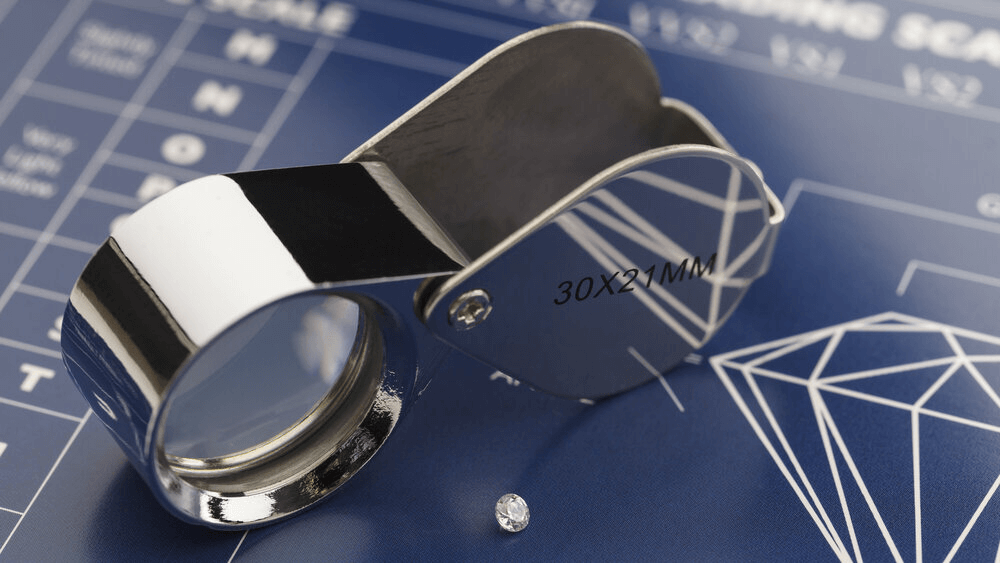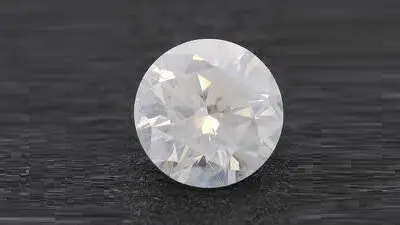Diamond Clarity: The Insider’s Guide

By Gary A.

Edited by Olivia H.
Published Oct 31, 2021
Edited on Dec 18, 2024
Understanding the Diamond Clarity chart is essential for selecting a gemstone that truly perfectly sparkles. Dive into our comprehensive guide to master the Diamond Clarity chart and find your ideal diamond.

Navigate This Guide:
- 7 Quick Tips for Examining Diamond Clarity When Buying an Engagement Ring
- Introduction
- The Basics of Clarity in Diamonds
- Decoding the Clarity Grades
- How Clarity Fits with the 4 Cs
- Understanding Grading Processes and Levels of Clarity
- Our Expert Take
- 10 FAQs
Before we dive deeper into the specifics, here are some practical tips to help guide your decision-making process:
7 Quick Tips for Examining Diamond Clarity When Buying an Engagement Ring
- Tip 1: Learn to Interpret the Clarity Grade Familiarize Yourself with Clarity Terms: Know the difference between inclusions (internal flaws) and blemishes (surface flaws). Understand the Grading Scale: Recognize what each grade means, from Flawless to Included, and how they impact the diamond’s appearance.
- Tip 2: Inspect the Diamond Under Various Lighting Conditions Different Lighting: View the diamond under multiple lighting conditions, including natural and store lighting, to see how inclusions affect its sparkle and brilliance. Spotting Flaws: Some inclusions are more visible under certain lighting, so this step is crucial for a thorough examination.
- Tip 3: Use a Jeweler’s Loupe to Examine Inclusions Magnification Tool: Even if you’re not an expert, using a jeweler’s loupe (a 10x magnifying glass) can help you spot inclusions and understand their impact on the overall clarity. Identifying Inclusions: Look for common inclusions like feathers, clouds, or crystals, and see how they affect the diamond’s clarity.
- Tip 4: Prioritize Eye-Clean Diamonds Eye-Clean Focus: Choose a diamond that appears clean to the naked eye, even if it has a lower clarity grade on paper. An SI1 or SI2 grade often offers the best value for diamonds that appear flawless in normal viewing conditions.
- Tip 5: Evaluate the Size and Position of Inclusions Size and Position Matter: Larger inclusions or those located in the center are more noticeable. Inclusions near the edges can be less visible or even hidden by the setting. Effect on Durability: Be aware that certain types of inclusions can affect the diamond’s durability. For instance, large feathers near the surface might make the diamond more vulnerable to chipping.
- Tip 6: Consider the Shape and Cut of the Diamond Shape Impact: Certain diamond shapes hide inclusions better than others. For example, round brilliant cuts disperse light effectively, which can mask some inclusions. Cut Quality: A well-cut diamond can also enhance the stone’s ability to hide inclusions, making clarity less of a concern compared to a poorly cut diamond.
- Tip 7: Compare Diamonds Side by Side Direct Comparison: If possible, compare multiple diamonds side by side. This can help you understand the practical differences between various clarity grades and make a more informed choice.
Now that you’ve got these practical tips, use Jeweler AI below to find the perfect engagement ring that suits your style and budget:
Introduction
As one of the Four Cs, diamond clarity is likely to be a phrase you get pretty used to hearing, even in the very early days of your search. This is, of course, no bad thing; nobody wants to invest thousands of dollars into a diamond that already came out of the ground looking damaged or dull, particularly when it’s intended to be given as a sign of your love and commitment to your partner.
But the trouble starts when shoppers get too caught up on the subject of clarity. Yes, its status as one of the Four Cs makes it a vital point to research, but it’s not the most important factor to consider – even when you’re preoccupied with getting as much sparkle out of your diamond as possible.
People who are overly worried about clarity need to brush up on their facts just as much as those who are taking a more blasé approach to the subject – and even those who are sitting on the fence could do with learning as much as possible before it’s too late.
With that in mind, read our diamond clarity guide – including where it needs to fall on your list of priorities – before you invest a single dime into a diamond.
The Basics of Clarity in Diamonds
Clarity specifically refers to the extent to which a diamond features inclusions and blemishes, which are flaws that can be seen within the diamond’s structure (these are natural inclusions, caused during the diamond’s development underground), or on the surface (natural or man-made blemishes).
What is the Diamond Clarity Chart?
Commonly referred to as the Diamond Clarity Scale, it represents the clarity levels of diamonds, used by jewelers and shoppers to quickly identify the quality of a diamond.
The diamond clarity spectrum is very, very broad. There is no universal diamond clarity scale, and many labs – the GIA, AGS, HRD and EGL included – offer their own approach (with some similarities) to grading clarity.
The GIA has established a very high standard for grading diamond clarity levels and typically grades one or two levels higher than some of the less-respected labs that offer grading services.
The grades run as follows:
- FL – Flawless
The clearest diamond grade. Even a skilled grader cannot detect any inclusions under 10x magnification. - IF – Internally Flawless
Even a skilled grader cannot detect any inclusions, although some blemishes are present. - VVS1 – Very, Very Slight Inclusions 1
A skilled grader can identify some very minor inclusions, although with great difficulty. - VVS2 – Very, Very Slight Inclusions 2
A skilled grader can identify some very minor inclusions, although with difficulty. - VS1 – Very Slight Inclusions 1
Featuring inclusions that are easier for a skilled grader to spot under magnification. - VS2 – Very Slight Inclusions 2
Inclusions are ‘somewhat easy’ for a skilled grader to identify under magnification. - SI1 – Slight Inclusions 1
Inclusions are more noticeable under magnification. - SI2 – Slight Inclusions 2
Inclusions are very easily noticeable under magnification. - I1 – Inclusions 1
Inclusions are obvious under magnification and might impact the diamond’s visual clarity and brilliance. - I2 – Inclusions 2
Inclusions are obvious and significant and will impact the stone’s appearance.
An I3 clarity grade does exist for some certification labs, but the GIA does not recognize it as a valid clarity grade. At WillYou, we always recommend that our readers focus their search on GIA graded diamonds – and, for that reason, we will focus on the GIA’s system throughout this article.
Decoding the Clarity Grades
Flawless Diamonds
We’re including both the FL and IF diamonds in this part of our clarity diamond guide – namely because it’s next to impossible for you to track down an actual FL diamond. Even the chances of you finding an IF diamond are relatively slim compared with the other grades.
As such, the first con to these two grades is their rarity. This poses considerable appeal to collectors but, when you hold it up alongside the second con – price – it really doesn’t seem worth it at all. The final con is, of course, that nothing about your diamond’s appearance will be determined by its flawlessness. If you’re looking to create a true conversation piece, then it’s better to channel those extra funds into carat weight, rather than clarity, as larger diamonds are what garner admirers, and make a lasting impression.
VVS1 and VVS2 Diamonds
The obvious pro to these clarity grades is their proximity to the flawless grades. No matter what carat weight you’re looking at, you won’t struggle to find a diamond that appears perfectly clean and flawless, since they sit just one or two levels below the highest grades there are.
The cons are pretty similar to IF and FL diamonds, however. VVS1 and VVS2 diamonds are significantly less expensive than flawless diamonds, but they still fetch a premium for two main reasons: they’re easier to come by, and only marginally lower in quality. They also tend to draw in buyers who have not done their research on the clarity grades, and who think the only way to avoid visible flaws is to stick to the VVS grades.
The bottom line on these grades is this: if you opt for a VVS1 or VVS2 diamond, you will probably wind up spending thousands of dollars more than you need to.
VS1 and VS2
For those shopping for larger diamonds, these two grades are often considered to represent a sweet spot between excessively high prices, and the risk of noticeable imperfections. We are inclined to agree with them, since no one – not even a skilled grader – will be able to identify any difference between a VVS1 and a VS1 diamond without lab lighting and magnification tools.
VS1 and VS2 diamonds are also far more common, offering a wider array of choices and much more leeway for buyers to invest in size and cut quality – and, of course, color.
In fact, one of the most influential diamonds in the world – the Krupp diamond, once owned by Elizabeth Taylor and weighing in at 33.19 carats – was graded by the GIA as VS1. Some reports state that the diamond has the potential to be IF clarity if it undergoes a re-cut, but, as it stands, the diamond sits much further down the clarity scale.
The only major con is the fact that a little like the VVS grades, VS1 and VS2 can still cause buyers to spend more than they need to. Here’s why…
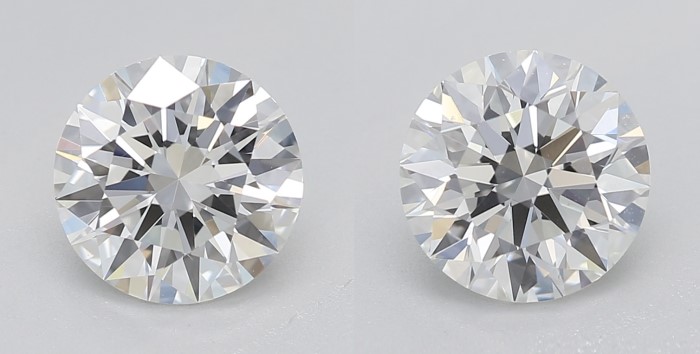
SI1 and SI2
In so many cases, the SI1 and SI2 grades represent the best diamond clarity grades for engagement rings and other pieces of fine jewelry. While many diamonds graded SI1 and SI2 will be accompanied by diamond plots that set alarm bells ringing for inexperienced shoppers, a huge variety of these diamonds appear totally eye clean – even to experienced jewelers who know what to look for, and how hard to look for it.
SI1 and SI2 diamonds are considerably cheaper, and we recommend all shoppers take full advantage of that fact – provided they’re shopping from a reputable source. Some jewelers are a lot more exacting about the visual quality of their diamonds than others. At WillYou, our aim has always been to equip customers with the knowledge they need to make sound decisions – and a selection of diamonds that really reflect what they want to see, rather than what
The main con to this grade is the fact that some larger SI1 and SI2 diamonds will not be eye clean. Also, finding an eye clean diamond that features a shape not known for masking inclusions – such as the Emerald – might prove trickier to find at this grade, but certainly not impossible.
I1 and I2
You might be surprised to find out that it’s possible to find an eye clean diamond at an incredibly attractive price as low as the I1 clarity level on a diamond, but you can. While it won’t be as easy to find one at this grade as it is at the VS and SI grades, and we’re not advising you to search for your dream 3 carat Asscher at this grade, it’s still a distinct possibility for many shoppers.
Our advice? Don’t just settle for anything. Plenty of prominent, online retailers skip the QA in favor of selling in larger volumes, but our internal standards at WillYou mean we check each and every diamond we acquire against a rigorous list of criteria.
From Flawlessness to Included – a Grader’s Perspective
Eye clean diamonds don’t have a specific grade – they are included within the clarity spectrum and can be found in various grades, such as Si1 or Vs2 diamonds. Inclusions can be so small that they are not even visible under 10x magnification. In these instances (which are, admittedly, extremely rare) the diamond will be given a clarity grade of FL or IF, meaning ‘Flawless’ or ‘Internally Flawless’. It will still have inclusions, but they will be too small even for the jeweler’s usual tools to see.
There are, however, two important things to keep in mind when it comes to flawlessness. First of all, it’s not only rare but highly coveted among collectors, meaning that a flawless diamond – even a pretty small one – will go for an extremely high price. Secondly, their appeal primarily lies in the rarity of an FL or IF grade, rather than their appearance, since even VS2 diamonds – five grades lower than FL – can appear to be free of inclusions, even though they are definitely there.
So, this brings us round to the most important takeaway of all: eye cleanliness is a totally different thing to clarity, which looks deep beneath the surface of the diamond and into areas far too small to be seen without the proper equipment.
How Clarity Fits with the 4 Cs
Given how frequently it’s mentioned in guides to diamond buying, it’s no surprise that so many shoppers start to worry about investing in the highest clarity grade they can afford. However, overthinking this feature can be just as detrimental as underthinking, so here’s what you need to know about the significance this C holds for the other three Cs of diamond quality.
Does the Clarity of a Diamond Really Matter?
Yes, but not as much as you might think.
We will go through this in much closer detail throughout this article but, for now, it’s important for you to build a ‘frame of reference’ for diamond clarity.
It is vital that you pay attention to your diamond’s clarity grade – but it is equally vital that you understand how easy it is to waste your money on this one aspect.
For an engagement ring, the wisest decision any shopper can make is to choose a diamond that features no visible inclusions, rather than agonizing over each grade individually. And, thankfully, doing so is actually much easier than it sounds…
Eye Clean Diamonds: Your Best Bet
Plenty of the grades listed above can be ‘eye clean’ – or, in other words, feature inclusions that are only noticeable under magnification, not when you’re actually holding (or wearing) the diamond outside of the lab.
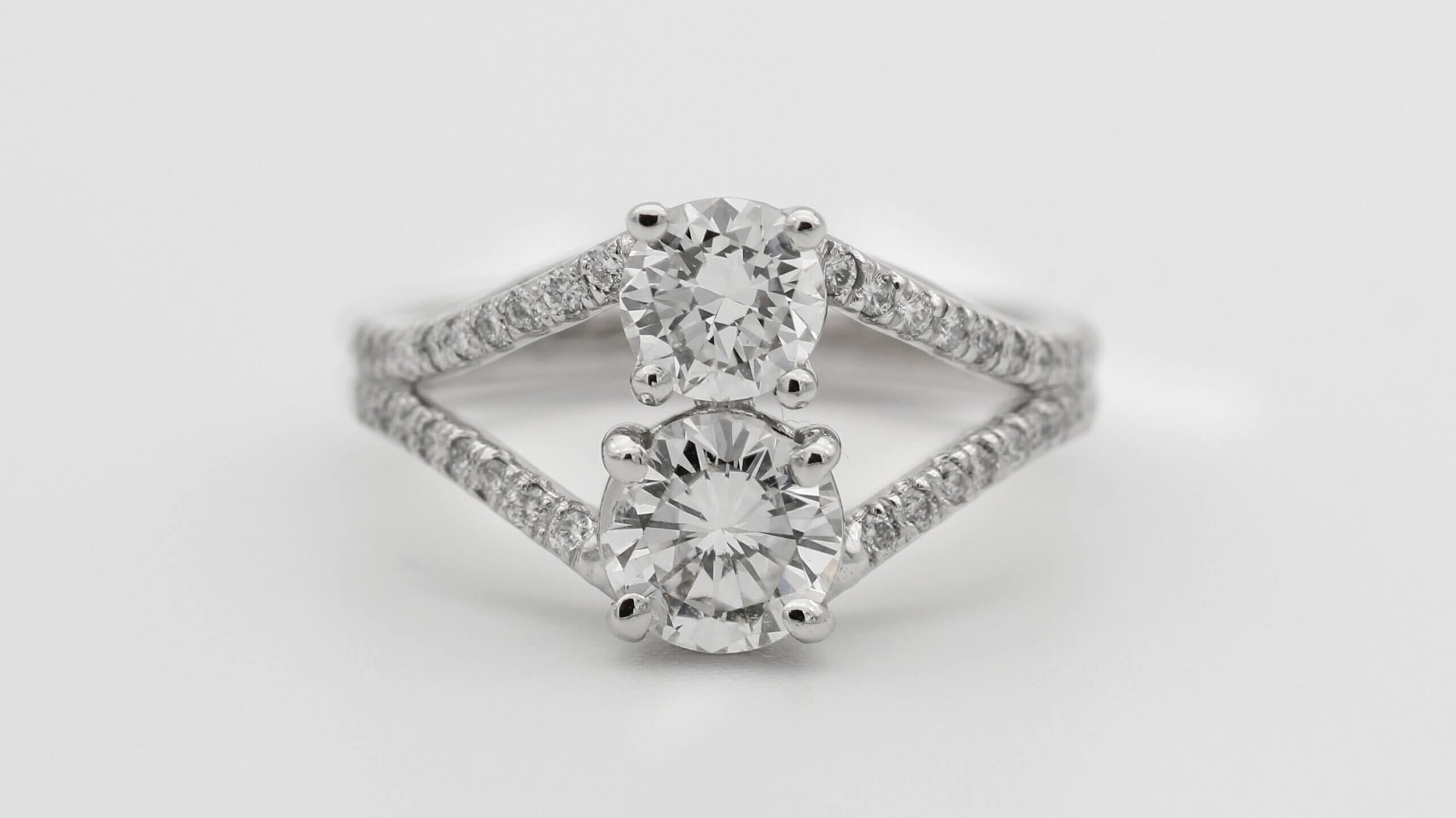
How far down the diamond clarity chart you can go before eye clean diamonds are no longer an option depends on the carat weight of the diamond, and its shape, but, generally, buyers will find an excellent and beautiful stone between the SI1 and VS2 grades.
The difference in financial value between a diamond of one clarity grade and one of another is much more noticeable. While the difference between two consecutive grades at the lower end of the scale tends to be around the $1,000 mark, a VVS1 diamond can be more than double the price of an SI2 diamond of the same weight, color and cut grade – even if both diamonds show no visible inclusions.
Understanding Grading Processes and Levels of Clarity
The GIA will assign at least two expert graders to every diamond they receive, and a final grade is only given once a consensus can be reached. If necessary, additional graders will be asked to consult on the diamond until they are able to reach that vital agreement.
Diamonds are analyzed under 10x magnification against a strict diamond clarity list, which is why so many of the inclusions identified during this process don’t matter to shoppers. Neither you or your partner is ever likely to analyze your engagement ring under a loupe (a special magnifying tool used by jewelers and graders), so you don’t need to set your alarm bells ringing just because the diamond plot looks pretty full.
That brings us to the next resource you’ll have at your disposal, alongside the grade itself: the diamond plot. This is a diagram used to detail each and every inclusion identified by the diamond’s graders, using various symbols to represent the different types of flaws present – and, of course, their size and location.
This is very useful for anyone who wants to really understand the diamond they are investing in, and notes down your chosen diamond’s distinguishing features – a pretty interesting detail to know.
Comparing Natural and Lab Grown Diamonds
Both natural and lab grown diamonds will feature inclusions, and it’s a myth that synthetic diamonds are flawless.
As a result, it’s not worth using clarity as the deciding factor when choosing between a natural and lab grown diamond engagement ring. Take a look at our guide to lab grown diamonds – and why we consider them to be a poor substitute for a real diamond – if you’re interested to learn more.
Navigating Clarity in Certifications
Within your diamond report, you will find a key noting all the symbols that are relevant to your diamond’s inclusions and blemishes. With these, you can treat the diagram like a detailed map of your unique diamond.
The diagram is not drawn to scale, and shouldn’t be confused with the diagram above it, which details proportions. It will feature a rough depiction of your diamond’s face-up appearance and the view from the pavilion.
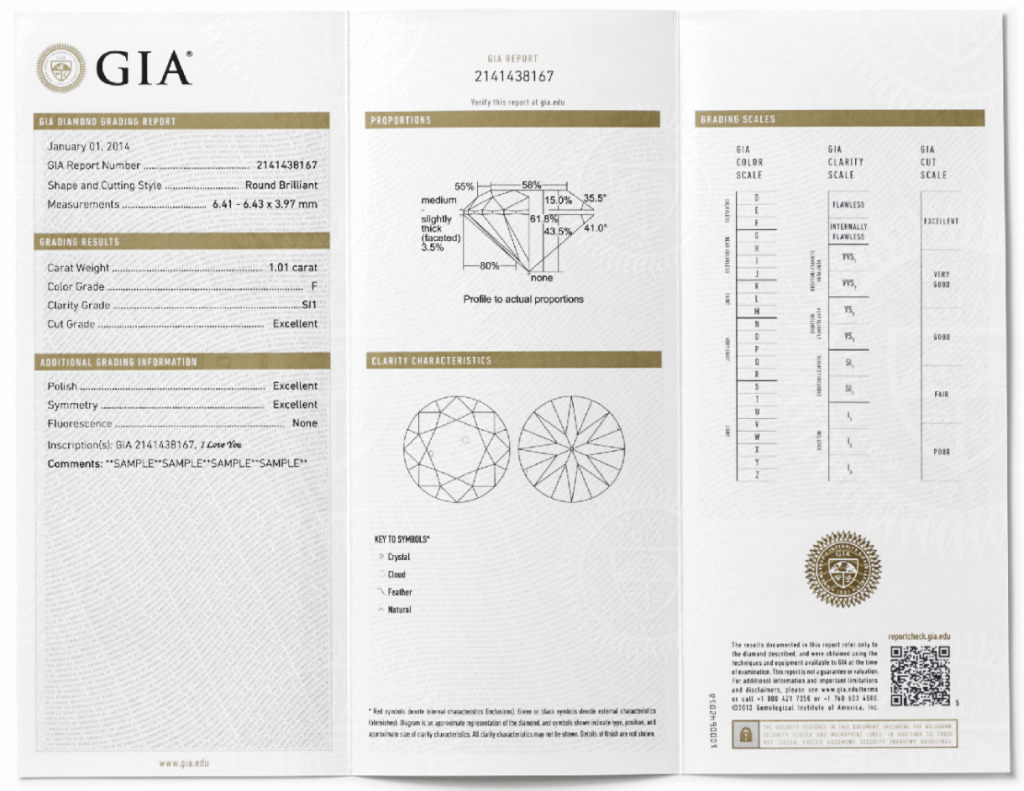
Usually, if an inclusion is not listed within the diagram, it is because it is not relevant to the clarity grade a diamond has received. For instance, if the diamond features a major inclusion that results in an I2 clarity grade and a very minor cloud, this cloud may not be addressed in the diamond’s plot.
Where the key to the grader’s symbols is given, the most significant inclusion will be listed first – although laser drill holes will always be listed first.
Our Expert Take
So, how do you get diamond clarity right? There’s no straightforward answer to this question, but, provided you understand how the clarity grades impact the diamond – both microscopically, and visually – it’s easy to tackle clarity alongside the rest of the Four Cs, rather than investing your entire budget into a small, but technically perfect, stone.
Making a good decision over your diamond’s clarity means finding a sweet spot, rather than forcing yourself into one end of the scale. It’s just as bad a decision to go too high as it is too low, so take your time over this aspect – but try not to overthink it.
10 FAQs
- Q1: What is diamond clarity?
- A: Diamond clarity refers to the absence of internal inclusions and surface blemishes. It’s one of the 4Cs used to evaluate a diamond’s quality, indicating how clean or clear the diamond is.
- Q2: How is diamond clarity graded?
- A: Clarity is graded on a scale from Flawless (no inclusions or blemishes visible under 10x magnification) to Included (inclusions and/or blemishes are obvious under 10x magnification). This grading is typically done by expert gemologists using specialized equipment.
- Q3: What does ‘eye-clean’ mean in diamond clarity?
- A: ‘Eye-clean’ refers to a diamond that has no inclusions visible to the naked eye. It’s a subjective term and depends on the observer’s eyesight and the viewing conditions.
- Q4: Is a higher clarity grade always better?
- A: Not necessarily. While higher clarity grades are rarer and more valuable, many lower-grade diamonds appear just as flawless to the naked eye and can offer better value.
- Q5: Do inclusions affect a diamond’s durability?
- A: Some types of inclusions can impact a diamond’s structural integrity, making it more susceptible to damage. However, most inclusions have a negligible effect on a diamond’s strength.
- Q6: Can you see diamond inclusions without magnification?
- A: It depends on the size, type, and location of the inclusions. Some inclusions are visible to the naked eye, especially in lower clarity grades, while others are only detectable under magnification.
- Q7: Does the clarity of a diamond affect its sparkle?
- A: Clarity can influence a diamond’s sparkle, but it’s usually less impactful than the cut. A well-cut diamond with lower clarity can still have excellent sparkle and brilliance.
- Q8: Are lab-grown diamonds clearer than natural diamonds?
- A: Lab-grown diamonds can have fewer inclusions because of the controlled growing conditions. However, both lab-grown and natural diamonds can achieve high clarity grades.
- Q9: How important is clarity when choosing an engagement ring?
- A: Clarity is important, but it should be balanced with other factors like cut, color, carat weight, and personal preferences. Eye-clean diamonds in the SI (Slightly Included) or VS (Very Slightly Included) ranges often provide the best balance of beauty and value.
- Q10: Can diamond clarity be improved?
- A: Certain treatments, like laser drilling and fracture filling, can enhance a diamond’s apparent clarity. However, these treatments should be disclosed, as they can affect the diamond’s value and require special care.
Discover your perfect diamond with Jeweler AI: Unveil clarity like never before with our intelligent selection process!
FOLLOW-UP GUIDE SERIES













